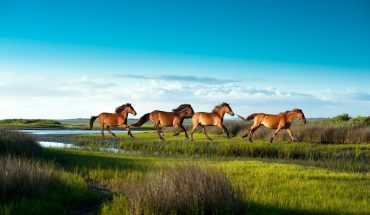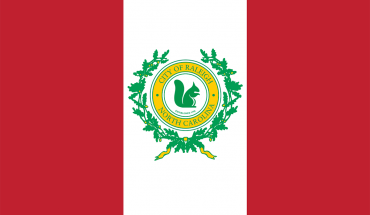An author and naturalist offers a reflection on Raleigh’s trees as we say goodbye to a beloved oak.
Written by John Dancy-Jones
Raleigh’s trees dominate the landscape—you can see that clearly from the rooftops of our skyscrapers or as you’rearriving by airplane. Abandoned farmland has restored much of Wake County’s acreage to a wooded state, and ancient, magnificent oaks are a major feature of downtown Raleigh. Our local trees comprise a varied list of hardwood and conifer species, and large oaks, with their shape, shade and fall foliage, are a prominent and beloved part of Raleigh’s natural skyline. It’s no wonder we embrace this special relationship with trees in our moniker, the City of Oaks.

When William Christmas surveyed the plot of land purchased by the North Carolina commissioners from Joel Lane, he described the prominence of trees between Crabtree Creek and Walnut Creek as a “beautiful eminence” with “groves of young oak and hickory” all around. Many old trees were preserved in the construction of our planned city, so large oaks have been a part of downtown’s ambiance since the beginning.
On the west of town, white oaks large enough for use in shipbuilding were harvested in Raleigh’s early years. Highly-prized longleaf pine grew south of Raleigh until a railroad constructed in 1899 enabled their timbering. Cedar and cypress trees were common to the east. The pine tree, no specific species, is the state tree of North Carolina. Some beloved species, such as pecans, crepe myrtles and ginkgo, were imported from afar. Trees provided the material for most construction during Raleigh’s first decades, and timbering is an important industry for Wake County to this day.
Our oak trees, however, have been here far longer than human habitation of any kind. Raleigh today boasts many oak trees. Some of the most handsome ones downtown are planted willow oaks, chosen for their compact form and long life. They grow naturally in bottomlands, and can get quite large.
Both of the two main oak families, red and white, are well-represented in Raleigh. Primary is the white oak; its leaves have rounded lobes, and its acorns are sweeter than those of the red oak, so they’re preferred by wildlife. Water oaks, in the white oak family, have a small, single-lobed leaf and are sometimes confused with live oaks, whose leaves have a similar shape but are stiffer (to hold up to winds in maritime forests). A water oak in Kiwanis Park was the largest in the state until its demise a few years ago.
All the members of the red oak family, which includes black oaks, have soft pointed spines on the ends of their leaf lobes and more bitter acorns. We are in the overlapping range of northern and southern red oaks, the latter distinguishable by soft fuzz on the underside of its leaves.
Downtown Raleigh hosts many remarkable individual trees, though others have been lost over time. A plaque on North Street commemorates the Henry Clay Oak, for example, an extraordinary white oak which reached 100 feet in height and a girth of over six feet. Under this oak, according to tradition, Henry Clay wrote the famous “Raleigh letter” in 1844 that opposed the annexation of Texas (and cost him the presidential election). The tree succumbed to weather damage and disease in 1991 at the approximate age of 200.
Nearby are the most beautiful oaks in downtown, behind the state library in the small park at Lane and Wilmington Streets. The revamped Moore Square is still home to numerous handsome oaks, though a large one at the corner of Martin and Person Streets was lost to old age a few years ago. This caused some consternation to local residents, but nothing compared to the recent mourning of the huge willow oak in Nash Square, directly across from the Berkeley Cafe.
Raleigh has long employed an urban forester to help manage the city’s tree resources, and it has effective policies in place to prevent the removal of massive trees and replace ones that come down for new development. The tree in question had a terminal disease and was dropping large limbs at an alarming rate. Yet being one of the largest and most noticeable oaks in downtown, seeing it come down in early October was hard, especially knowing it can take centuries to grow an oak so majestic.
So as we lose one cherished tree, remember this: As providers of shade, oxygen, carbon storage and peaceful vibes, trees of any size or age can become beloved. Do your part to nurture young trees and preserve the ones we’ve got, and Raleigh will remain rich in trees—and perhaps one of those will grow into an icon for future generations.
Adapted excerpt from The Natural History of Raleigh. The Paper Plant, 2018



